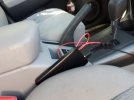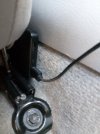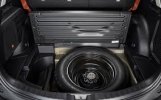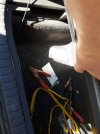GTA Driver
Well-Known Member
- Joined
- Apr 5, 2015
- Messages
- 1,264
- Reaction score
- 602
- Location
- Greater Toronto Area
- Country
- Canada
- Dash Cam
- Iroad 3300CH, G1W-c, Mobius C, A119 v1 & v3, A118-c2
Few days ago, bought my first Battery pack at a small electronic shop in a mall I work. Its a Belkin Pocket power 10k. If this works out, I may get additional battery packs from amazon.ca
It will charge in my home never in my car. Its "Lithium polymer". I see some people, most notably @Dashmellow have had battery packs for some time. Are Lithium polymer safe in extreme heat and cold?
We have had a few days approaching record temperature. Three days at 35c. In the winter, evening at -30 c. My SUV is black and I can not park in the shade when I am working.
edit: according to http://www.belkin.com/us/p/P-F7U020/
It will charge in my home never in my car. Its "Lithium polymer". I see some people, most notably @Dashmellow have had battery packs for some time. Are Lithium polymer safe in extreme heat and cold?
We have had a few days approaching record temperature. Three days at 35c. In the winter, evening at -30 c. My SUV is black and I can not park in the shade when I am working.
edit: according to http://www.belkin.com/us/p/P-F7U020/
THE SAFETY TRIANGLE
Belkin batteries include sensors monitoring heat, voltage and circuitry so the power bank (a.k.a. portable charger) will not overheat and harm your devices. Excess heat, voltage fluctuation or circuit abnormalities activate an override that shuts the battery down immediately for ultimate safety.
Last edited:




